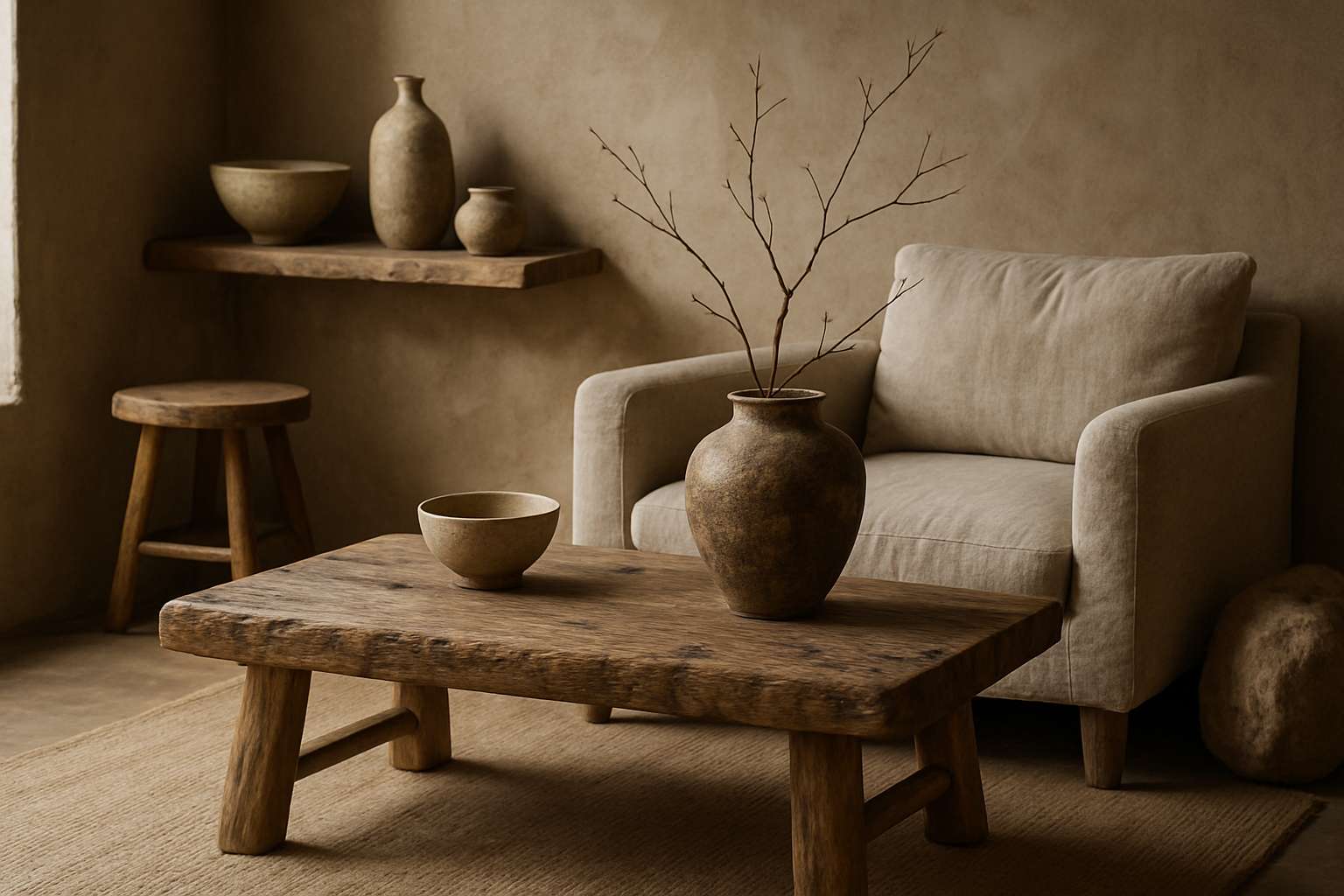The Wabi-Sabi Revolution: Embracing Imperfection in Home Design
The Japanese aesthetic philosophy of wabi-sabi is quietly reshaping the landscape of modern home design, offering a refreshing counterpoint to the polished perfection that has long dominated interior trends. This ancient concept, which finds beauty in the imperfect, impermanent, and incomplete, is now inspiring homeowners and designers alike to create spaces that are both profoundly personal and deeply serene.

Origins and Philosophy of Wabi-Sabi
Wabi-sabi has its roots in 15th century Japanese tea ceremonies, where simple, rustic tea bowls were prized over ornate, perfect ones. The term combines two concepts: wabi, which refers to the beauty of humble simplicity, and sabi, which embraces the passage of time and the beauty of age.
In home design, this translates to an appreciation for natural materials, organic forms, and the marks left by time and use. It’s about finding beauty in the cracks, chips, and wear that tell a story of an object’s journey through life.
Applying Wabi-Sabi Principles in Modern Homes
Incorporating wabi-sabi into your home doesn’t mean creating a Japanese-style interior. Rather, it’s about adopting a mindset that values authenticity over perfection. Here are some ways to bring this philosophy into your space:
-
Embrace natural materials: Opt for wood, stone, clay, and linen in their raw, unpolished states.
-
Celebrate imperfections: Choose handmade items with visible brushstrokes or asymmetries.
-
Create a sense of history: Mix vintage pieces with modern elements to add depth and character.
-
Simplify: Remove unnecessary clutter and focus on items that bring joy or serve a purpose.
-
Connect with nature: Bring in plants, natural light, and organic shapes to create a sense of calm.
The Wabi-Sabi Color Palette
While wabi-sabi isn’t strictly about color, certain hues lend themselves well to this aesthetic. Earthy, muted tones that reflect the natural world are key. Think of the soft greys of stone, the warm browns of aged wood, and the subtle greens of mosses and lichens.
These colors create a serene backdrop that allows textures and forms to take center stage. Avoid bright, synthetic colors in favor of natural dyes and pigments. Even white walls can play a role, but opt for soft, warm whites rather than stark, clinical shades.
Textures and Materials in Wabi-Sabi Design
Texture is paramount in wabi-sabi interiors. Rough-hewn wood, nubby linens, and unglazed ceramics all contribute to a tactile, sensory experience. Look for:
-
Raw silk or slubbed linen for curtains and upholstery
-
Unfinished or reclaimed wood for furniture and flooring
-
Handmade pottery with visible irregularities
-
Natural stone with rough-cut edges
-
Woven baskets and textiles with subtle imperfections
The key is to create a layered, lived-in feel that invites touch and contemplation.
Wabi-Sabi and Mindful Living
Perhaps the most profound aspect of wabi-sabi in home design is its ability to foster a more mindful way of living. By surrounding ourselves with objects that bear the marks of time and use, we’re reminded of the transient nature of all things.
This philosophy encourages us to slow down, to appreciate the beauty in everyday moments, and to find contentment in simplicity. It’s a powerful antidote to the culture of constant consumption and the pursuit of perfection that often leaves us feeling unsatisfied.
The Future of Wabi-Sabi in Home Design
As we move forward, the principles of wabi-sabi are likely to become even more relevant. In a world increasingly dominated by technology and virtual experiences, there’s a growing desire for authentic, tactile environments that ground us in the physical world.
Designers are experimenting with new ways to incorporate wabi-sabi principles into contemporary spaces. We’re seeing:
-
The use of 3D printing to create intentionally imperfect objects
-
A revival of traditional crafts with a modern twist
-
Innovative materials that age beautifully, like self-healing concrete
-
Smart home technology integrated seamlessly into wabi-sabi inspired interiors
Challenges and Considerations
While the wabi-sabi aesthetic is gaining popularity, it’s not without its challenges. In a culture that often equates newness with value, embracing imperfection can be a significant mindset shift. There’s also a risk of the concept being oversimplified or commercialized, losing its deeper philosophical meaning.
For those looking to incorporate wabi-sabi into their homes, it’s important to approach it as a journey rather than a destination. It’s not about creating a perfect wabi-sabi interior, but about cultivating an appreciation for the beauty of imperfection in our daily lives.
Conclusion
The wabi-sabi revolution in home design offers more than just a new aesthetic trend. It presents a holistic approach to creating living spaces that are not only visually appealing but also emotionally resonant and spiritually nourishing.
As we navigate an increasingly complex and fast-paced world, the principles of wabi-sabi remind us to find beauty in simplicity, to embrace the passage of time, and to create homes that are true reflections of our lived experiences. In doing so, we may just find that our imperfect spaces are perfectly suited to the art of joyful, mindful living.





